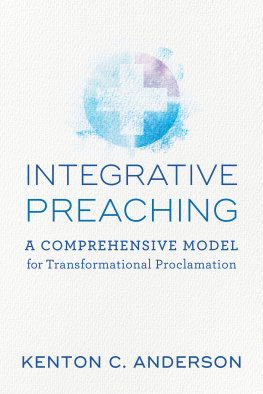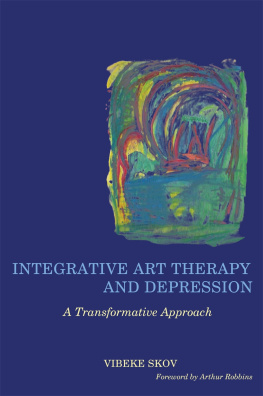Transformational Chairwork
Transformational Chairwork
Using Psychotherapeutic Dialogues in Clinical Practice
Scott Kellogg
ROWMAN & LITTLEFIELD
Lanham Boulder New York London
Published by Rowman & Littlefield
A wholly owned subsidiary of The Rowman & Littlefield Publishing Group, Inc.
4501 Forbes Boulevard, Suite 200, Lanham, Maryland 20706
www.rowman.com
Unit A, Whitacre Mews, 2634 Stannary Street, London SE11 4AB
Copyright 2015 by Rowman & Littlefield
All rights reserved . No part of this book may be reproduced in any form or by any electronic or mechanical means, including information storage and retrieval systems, without written permission from the publisher, except by a reviewer who may quote passages in a review.
British Library Cataloguing in Publication Information Available
Library of Congress Cataloging-in-Publication Data
Kellogg, Scott, 1954, author.
Transformational chairwork : using psychotherapeutic dialogues in clinical practice / S cott Kellogg.
p. ; cm.
Includes bibliographical references and index.
ISBN 978-1-4422-2953-2 (cloth : alk. paper)ISBN 978-1-4422-2954-9 (electronic)
I. Title.
[DNLM: 1. Gestalt Therapymethods. 2. Interview, Psychologicalmethods. WM 42 0.5.G3]
RC489.G4
616.89143dc23
2014039924
 The paper used in this publication meets the minimum requirements of American National Standard for Information SciencesPermanence of Paper for Printed Library Materials, ANSI/NISO Z39.48-1992.
The paper used in this publication meets the minimum requirements of American National Standard for Information SciencesPermanence of Paper for Printed Library Materials, ANSI/NISO Z39.48-1992.
Printed in the United States of America
Contents
Acknowledgments
Speaking Ones Mind
External Dialogues: Grief, Loss, and Unfinished Business
External Dialogues: The Treatment of Trauma and Difficult Relationships
External Dialogues: Assertiveness and Behavioral Rehearsal
Internal Dialogues: Multiplicity and Inner Conflict
Internal Dialogues: Inner Critic and Negative Schema Voices
Inner Dialogues: Polarity Work
Substance Use and Addictive Behaviors
Feminist Therapy, Internalized Oppression, Somatic Concerns, and Working with Psychosis
Deepening Your Practice
References
Index
About the Author
Chapter 1
Speaking Ones Mind
The reverberations of these experiences brought up strong feelings of angereven decades later. To work through and hopefully resolve this issue, I set up an encounter with his father. I invited him to sit in one chair and imagine his parent in the chair opposite. I encouraged him to speak with his father and to tell him how deeply distressing those coaching sessions had been for him as a child. After expressing anger about the relentless perfectionism that he had been subjected to, I then invited him to switch chairs and be his father. Doing this, he gave voice to his fathers concern that he learn how to play the game the right way. We alternated chairs and gave voice to both of their perspectives. We then debriefed the experience. The full power of this session became clear a week later when he returned and told me that the dialogue had worked, that he no longer felt a profound resistance to orders and requests and that he had been able to attend and participate in a work meeting without discomfort. It would turn out that this would be a change that lasted. This single session cure would inspire me to begin a journeya journey centered on exploring the healing power of dialogue and encounter (adapted from Kellogg, 2013). Given this, perhaps the best place to start is with the story of Dr. Perls and the development of Chairwork.
FRITZ PERLS AND THE CREATION OF CHAIRWORK
In the 1960s, Dr. Frederick Perls emerged as a major figure in Humanistic Psychology and what would eventually be known as the Human Potential Movement. Fritz, as he was called, challenged the world of psychotherapy not only with his creative use of awareness as a central therapeutic intervention, but also through his astonishing and virtuosic demonstrations using the Chairwork technique. His experiential work with chair dialogues inspired psychotherapists from nearly every school of therapywith many of them integrating and reinterpreting both the technique and its underlying mechanisms of change. It is this rich and still-developing heritage that is the foundation for this book.
Perls overnight success was, of course, built on a lifetime of effort, exploration, and experimentation. His life was, in many ways, quite extraordinary as he engaged with many of the most tragic and creative forces in 20th Century Western European and American history. It is my intention to briefly touch on some of the key moments in his professional and creative life; for those interested in a deeper exploration, there are a number of excellent biographies available (Clarkson & Mackewn, 1993; Gaines, 1975; Shepard, 1972).
Frederick Fritz Perls was born in 1893 into a middle-class family in a Jewish section of Berlin. One of three children, Perls reported that his early childhood was happy, but that things changed as he got older. Over time, his relationship with his father deteriorated to the point of mutual hatred, and, at age ten, he began to act outwhich eventually led to his being expelled from school.
At fourteen, he was admitted to the Askanische Gymnasium . This was a more progressive school than the one that he had attended, and he grew to care deeply about many of the staff members. Fritz always loved the theater and, at age fifteen, he discovered the famous director, Max Reinhardt, the demanding and innovative leader of the Deutsche Theater . Perls spent his free time at the theater and, while not a great actor, he was able to fill several walk-on roles, which brought him great pleasure. This early experience in the theaterincluding that of seeing a great director in actionwould stay with him for the rest of his life. The positive environment of his school also helped him to regroup academically and he was able to graduate and enter the University of Berlin where he decided to study Medicine.
Shortly after he began his studies, World War I broke out. Because of medical issues and personal frailties, he was not drafted into the army in 1914; he did, however, volunteer with the Red Cross in 1915. By 1916, there was a growing need for soldiers and the requirements for enlistment were lowered. Fearing that he would be called up, Perls enlisted and became a medic.
As it was for millions of other combatants and civilians, Perls wartime experiences were deeply traumatic and emotionally damaging. Nonetheless, he won a medal for bravery and was promoted to the rank of Medical Sublieutenant, which was an officer rank. After the war, he returned to Medical School and graduated in 1920.
During the early years of Perls career, he was searching for answers and direction. He began to work as a psychiatrist and started spending his free time with the Bauhaus group and other bohemian circles. A successful doctor, he earned enough to come to New York City in 1923 and was able to get a job in the Hospital for Joint Diseases. He was, however, unhappy with the practice of Psychiatry there and returned to Berlin a few months later. At this time, he was also filled with self-doubt on both personal and professional levels and frequently suffered from bouts of self-criticism and depression.
In 1925, he developed an intense, life-changing relationship with Lucy, who was a sexually-vibrant and married distant relative. This experience served to bolster his sense of masculinity. However, he found the emotionally turbulent nature of his time with her to be deeply disturbing and, in 1926, he decided to begin psychoanalysis with Karen Horney. Karen Horney appears to have seen something in him and she would provide significant assistance to him several times over the next twenty years. After a few months of working with her, he decided to take a job in Frankfurt, and, at Horneys recommendation, he continued his analysis with Clara Happel.













 The paper used in this publication meets the minimum requirements of American National Standard for Information SciencesPermanence of Paper for Printed Library Materials, ANSI/NISO Z39.48-1992.
The paper used in this publication meets the minimum requirements of American National Standard for Information SciencesPermanence of Paper for Printed Library Materials, ANSI/NISO Z39.48-1992.